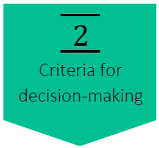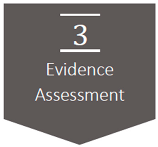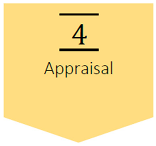National Immunization Program Decision Making Using the CAPACITI Decision-Support Tool: User Feedback from Indonesia and Ethiopia
Abstract
1. Introduction
2. Materials and Methods
2.1. The CAPACITI Decision-Support Tool
2.2. Country Implementation
2.2.1. Indonesia
2.2.2. Ethiopia
2.3. Documenting Reflections on Enablers and Constraints of CAPACITI Decision-Support Tool Implementation
3. Results
3.1. Enablers of CAPACITI Decision-Support Tool Implementation
3.2. Constraints of CAPACITI Decision-Support Tool Implementation
3.3. Benefits to the Immunization Program and Broader Health System
- The approach provided countries with a deliberative and inclusive process that included relevant stakeholders with various functions in the health system and ultimately led to shared and aligned decision-making. The CAPACITI tool structured their discussion across two consultations, which strengthened all stakeholders’ confidence in the decision and improved transparency;
- The MCDA approach encouraged users to consider a broader set of criteria and systematically identify and summarize available evidence when making immunization-related decisions. In Indonesia, criteria ranged from vaccine efficacy to budget impact, alongside other critical factors such as safety and local production. The discussion and agreement among the stakeholders on a set of considered criteria strengthened the overall process and resulting recommendation. Ethiopia appreciated the systematic documentation of the various evidence sources supporting a diverse group of stakeholders to come to a recommendation;
- The stepwise approach helped identify and make explicit important evidence gaps, which can contribute to setting the research agenda, both at national and regional levels, encouraging collaboration between different sectors.
4. Discussion
5. Conclusions
Author Contributions
Funding
Institutional Review Board Statement
Informed Consent Statement
Data Availability Statement
Acknowledgments
Conflicts of Interest
References
- Botwright, S.; Giersing, B.K.; Meltzer, M.I.; Kahn, A.L.; Jit, M.; Baltussen, R.; El Omeiri, N.; Biey, J.N.; Moore, K.L.; Thokala, P.; et al. The CAPACITI Decision-Support Tool for National Immunization Programs. Value Health 2021, 8, 1150–1157. [Google Scholar] [CrossRef] [PubMed]
- Chang-Blanc, D.; Grundy, J.; Sodha, S.V.; O’Connell, T.S.; von Mühlenbrock, H.J.M.; Grevendonk, J.; Ryman, T.; Patel, M.; Olayinka, F.; Brooks, A.; et al. Immunization programs to support primary health care and achieve universal health coverage. Vaccine 2022. [Google Scholar] [CrossRef]
- WHO. Immunization Agenda 2030: A Global Strategy to Leave No One Behind. 2020. Available online: https://www.who.int/immunization/immunization_agenda_2030/en/ (accessed on 15 December 2023).
- Steffen, C.A.; Henaff, L.; Durupt, A.; El Omeiri, N.; Ndiaye, S.; Batmunkh, N.; Liyanage, J.B.L.; Hasan, Q.; Mosina, L.; Jones, I.; et al. Evidence-informed vaccination decision-making in countries: Progress, challenges and opportunities. Vaccine 2021, 39, 2146–2152. [Google Scholar] [CrossRef] [PubMed]
- Kristensen, F.B.; Husereau, D.; Huić, M.; Drummond, M.; Berger, M.L.; Bond, K.; Augustovski, F.; Booth, A.; Bridges, J.F.P.; Grimshaw, J.; et al. Identifying the need for good practices in health technology assessment: Summary of the ISPOR HTA council working group report on good practices in HTA. Value Health 2019, 1, 13–20. [Google Scholar] [CrossRef] [PubMed]
- Botwright, S.; Kahn, A.L.; Hutubessy, R.; Lydon, P.; Biey, J.; Sidibe, A.K.; Diarra, I.; Nadjib, M.; Suwantika, A.A.; Setiawan, E.; et al. How can we evaluate the potential of innovative vaccine products and technologies in resource constrained settings? A total systems effectiveness (TSE) approach to decision-making. Vaccine X 2020, 6, 100078. [Google Scholar] [CrossRef] [PubMed]
- De Oliveira, L.H.; Toscano, C.M.; Sanwogou, N.J.; Ruiz-Matus, C.; Tambini, G.; Roses-Periago, M.; Andrus, J.K. Systematic documentation of new vaccine introduction in selected countries of the Latin American Region. Vaccine 2013, 3, 114–122. [Google Scholar] [CrossRef] [PubMed]
- World Health Organization and United Nations Children’s Fund. Estimates of National Immunization Coverage (WUENIC), 2021 Revision; WHO: Geneva, Switzerland, 2022. [Google Scholar]
- Guillaume, D.; Meyer, D.; Waheed, D.N.; Schlieff, M.; Muralidharan, K.; Chou, V.B.; Limaye, R. Factors influencing the prioritization of vaccines by policymakers in low- and middle-income countries: A scoping review. Health Policy Plan. 2023, 3, 363–376. [Google Scholar] [CrossRef] [PubMed]
- Hutubessy, R.; Lauer, J.A.; Giersing, B.; Sim, S.Y.; Jit, M.; Kaslow, D.; Botwright, S. The Full Value of Vaccine Assessments (FVVA): A framework for assessing and communicating the value of vaccines for investment and introduction decision-making. BMC Med. 2023, 21, 229. [Google Scholar] [CrossRef] [PubMed]
- Donadel, M.; Panero, M.S.; Ametewee, L.; Shefer, A.M. National decision-making for the introduction of new vaccines: A systematic review, 2010–2020. Vaccine 2021, 14, 1897–1909. [Google Scholar] [CrossRef] [PubMed]
- Marsh, K.; IJzerman, M.; Thokala, P.; Baltussen, R.; Boysen, M.; Kaló, Z.; Lönngren, T.; Mussen, F.; Peacock, S.; Watkins, J.; et al. Multiple criteria decision analysis for health care decision making-emerging good practices Report 2 of the ISPOR MCDA Emerging Good Practices Task Force. Value Health 2016, 2, 125–137. [Google Scholar] [CrossRef] [PubMed]
- Marsh, K.; Thokala, P.; Youngkong, S.; Chalkidou, K. Incorporating MCDA into HTA: Challenges and potential solutions, with a focus on lower income settings. Cost Eff. Resour. Alloc. 2018, 16, 43. [Google Scholar] [CrossRef] [PubMed]
- Baltussen, R.; Marsh, K.; Thokala, P.; Diaby, V.; Castro, H.; Cleemput, I.; Garau, M.; Iskrov, G.; Olyaeemanesh, A.; Mirelman, A.; et al. Multicriteria Decision Analysis to Support Health Technology Assessment Agencies: Benefits, Limitations, and the Way Forward. Value Health 2019, 11, 1283–1288. [Google Scholar] [CrossRef] [PubMed]
- Baltussen, R.; Jansen, M.P.M.; Oortwijn, W. Evidence-Informed Deliberative Processes for Legitimate Health Benefit Package Design—Part I: Conceptual Framework. Int. J. Health Policy Manag. 2022, 10, 2319–2326. [Google Scholar] [CrossRef] [PubMed]
- WHO. Guidance for Developing a National Immunization Strategy. 2021. Available online: https://cdn.who.int/media/docs/default-source/immunization/mi4a/ia2030_nis_guidelines.pdf?sfvrsn=d49fb045_6 (accessed on 15 December 2023).
- Hadler, S.C.; Shefer, A.M.; Cavallaro, K.F.; Ebama, M.; Tencza, C.; Kennedy, E.D.; Ndiaye, S.; Shah, A.; Torre, L.; Bresee, J.S. Supporting National Immunization Technical Advisory Groups (NITAGs) in development of evidence-based vaccine recommendations and NITAG assessments—New tools and approaches. Vaccine 2024. [Google Scholar] [CrossRef] [PubMed]
| Step of the Decision-Support Tool: | Description: |
|---|---|
 | OBJECTIVES What recommendation is needed and why? CONTEXT What is the current situation? What are the main implications of the recommendation? SCOPE Which options will you compare? PARTICIPATION Are the right stakeholders involved? Have you got the experts you need? |
 | CRITERIA Select which criteria will be used. WEIGHTS Come to an agreement on whether certain criteria are more important by assigning weights to criteria. RULES AND SCORING SCALES Decide how the evidence will be assessed against each of the criteria. |
 | EVIDENCE STATEMENTS Write a concise overview of available evidence and its quality for each criterion. PERFORMANCE MATRIX Generate a high-level comparison of each option according to the criteria. |
 | BY CRITERION Compare the different options according to each criterion.
Compare the overall performance of each option.
|
 | RECOMMENDATION What is the final decision? What is the rationale? How strong is the recommendation? COMMUNICATION AND MONITORING How will the recommendation be monitored? When will the recommendation next be reviewed? Are there priority data gaps to fill? |
| Indonesia | Ethiopia | |
|---|---|---|
| Type of decision | Vaccine introduction prioritization | Vaccine switch decision |
| Context | New vaccine introduction planning to inform a national multi-year strategic plan for immunization | Optimization of vaccine portfolio to increase coverage for measles vaccine |
| Decision-question | Which rollout scenario for Rotavirus, Human Papillomavirus (HPV), and Pneumococcal Conjugate Vaccine (PCV) do we select for introduction into the Expanded Programme on Immunization (EPI)? | Should we switch from a 10-dose measles-containing vaccine (MCV) vial to a 5-dose MCV vial? |
| Criteria for decision-making | Burden of disease, impact, vaccine availability, adverse events following immunization (AEFI), cold chain capacity, budget impact, community acceptance, schedule, local production, cost-effectiveness, and level of wastage | Safety, vaccine price, cost-effectiveness, equity, cold chain considerations, and the total vaccine wastage rate |
| Type of MCDA | Quantitative MCDA | Qualitative MCDA |
| Result | Prioritized scale-up scenarios for Rotavirus, HPV, and PCV | Recommendation to collect additional evidence on cost-effectiveness |
| National team(s) leading the implementation of the CAPACITI decision-support tool | Indonesian Technical Advisory Group for Immunization (ITAGI) and EPI Ministry of Health (MoH) | Ethiopian Public Health Institute (EPHI) |
Disclaimer/Publisher’s Note: The statements, opinions and data contained in all publications are solely those of the individual author(s) and contributor(s) and not of MDPI and/or the editor(s). MDPI and/or the editor(s) disclaim responsibility for any injury to people or property resulting from any ideas, methods, instructions or products referred to in the content. |
© 2024 by the authors. Licensee MDPI, Basel, Switzerland. This article is an open access article distributed under the terms and conditions of the Creative Commons Attribution (CC BY) license (https://creativecommons.org/licenses/by/4.0/).
Share and Cite
Jansen, M.; Spasenoska, D.; Nadjib, M.; Ararso, D.; Hutubessy, R.; Kahn, A.-L.; Lambach, P. National Immunization Program Decision Making Using the CAPACITI Decision-Support Tool: User Feedback from Indonesia and Ethiopia. Vaccines 2024, 12, 337. https://doi.org/10.3390/vaccines12030337
Jansen M, Spasenoska D, Nadjib M, Ararso D, Hutubessy R, Kahn A-L, Lambach P. National Immunization Program Decision Making Using the CAPACITI Decision-Support Tool: User Feedback from Indonesia and Ethiopia. Vaccines. 2024; 12(3):337. https://doi.org/10.3390/vaccines12030337
Chicago/Turabian StyleJansen, Maarten, Dijana Spasenoska, Mardiati Nadjib, Desalegn Ararso, Raymond Hutubessy, Anna-Lea Kahn, and Philipp Lambach. 2024. "National Immunization Program Decision Making Using the CAPACITI Decision-Support Tool: User Feedback from Indonesia and Ethiopia" Vaccines 12, no. 3: 337. https://doi.org/10.3390/vaccines12030337
APA StyleJansen, M., Spasenoska, D., Nadjib, M., Ararso, D., Hutubessy, R., Kahn, A.-L., & Lambach, P. (2024). National Immunization Program Decision Making Using the CAPACITI Decision-Support Tool: User Feedback from Indonesia and Ethiopia. Vaccines, 12(3), 337. https://doi.org/10.3390/vaccines12030337






